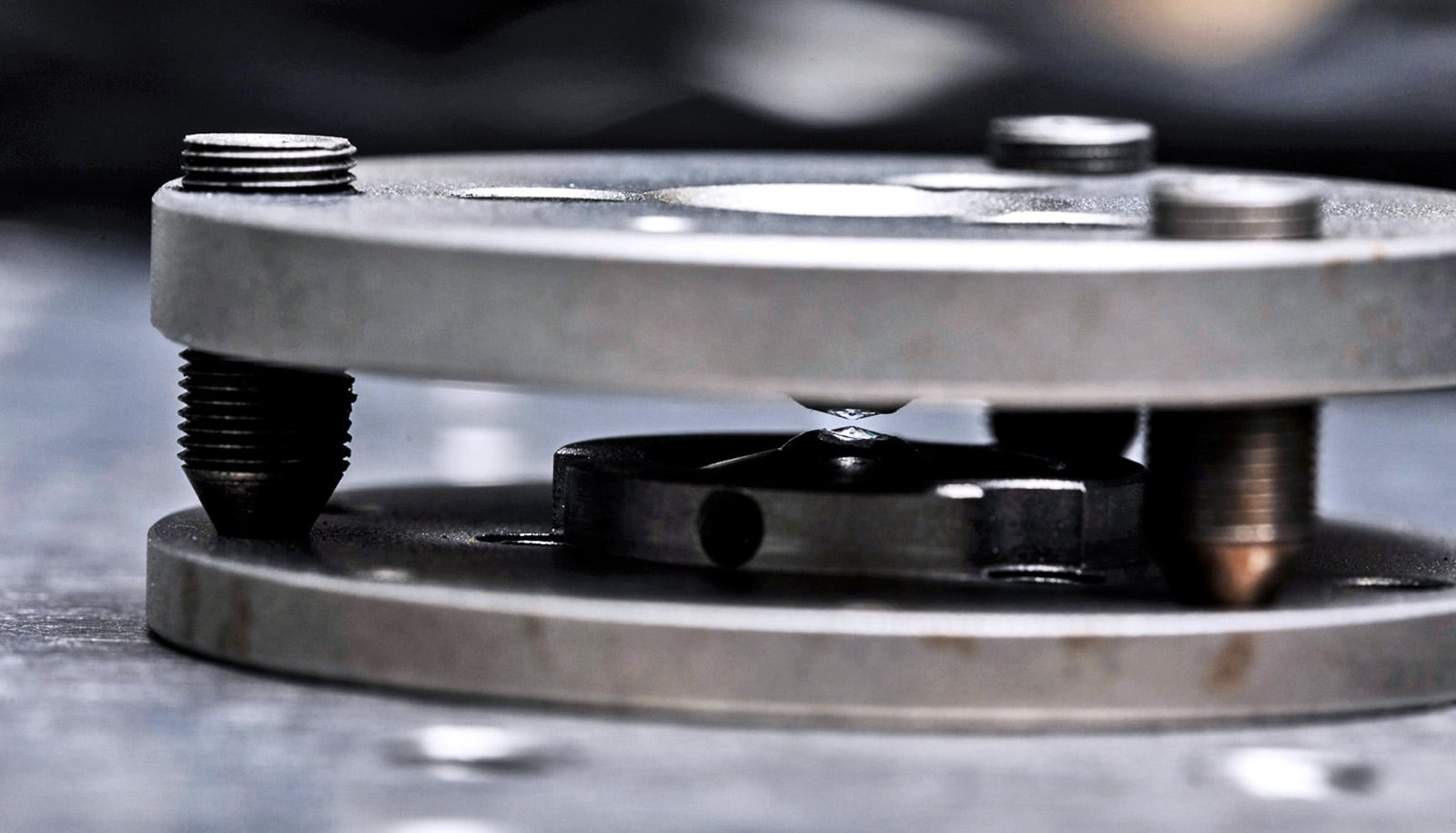Researchers have found a way to use extremely high pressure and temperature to dope nanodiamonds.
As reported in Science Advances, researchers used this approach to dope nanodiamonds with silicon, causing the diamonds to glow a deep red—a property that would make them useful for cell and tissue imaging.
Scientists are excited about diamonds—not the types in jewelry, but the microscopic variety that are less than the width of a human hair. These so-called “nanodiamonds” are made up almost entirely of carbon. But by introducing other elements into the nanodiamond’s crystal lattice—a method known as “doping”—researchers could produce traits useful in applications like medical research and computation.
The team discovered that their method could also dope nanodiamonds with argon, a noble gas and nonreactive element related to helium.
Nanodiamonds doped with such elements could be applied to quantum information science—a rapidly expanding field that includes quantum communication and quantum computing.
Like baking a cake
“Our approach lets us intentionally dope other elements within diamond nanocrystals by carefully selecting the molecular starting materials used during their synthesis,” says corresponding author Peter Pauzauskie, associate professor of materials science and engineering at the University of Washington and researcher at the Pacific Northwest National Laboratory.
There are other methods to dope nanodiamonds, such as ion implantation, but this process often damages the crystal structure and the introduced elements’ random placement limits performance and applications. Here, the researchers decided not to dope the nanodiamonds after they had been synthesized. Instead, they doped the molecular ingredients to make nanodiamonds with the element they wanted to introduce, then used high temperature and pressure to synthesize nanodiamonds with the included elements.
In principle, it’s like making a cake: It is far simpler and more effective to add sugar to the batter, rather than trying to add sugar to the cake after baking.
Incredible pressure and heat
The team’s starting point for nanodiamonds was a carbon-rich material—similar to charcoal, says Pauzauskie—which the researchers spun into a lightweight, porous matrix known as an aerogel. They then doped the carbon aerogel with a silicon-containing molecule called tetraethyl orthosilicate, which was chemically integrated within the carbon aerogel.
The researchers sealed the reactants within the gasket of a diamond anvil cell, which could generate pressures as high as 15 gigapascals inside the gasket. For reference, 1 gigapascal is roughly 10,000 atmospheres of pressure, or 10 times the pressure at the deepest part of the ocean.
To prevent the aerogel from being crushed at such extreme pressures, they used argon, which becomes solid at 1.8 gigapascals, as a pressure medium. After loading the material to high pressure, the researchers used a laser to heat the cell above 3,100 F, more than one-third the surface temperature of the sun. In collaboration with E. James Davis, professor emeritus of chemical engineering, they saw that at these temperatures the solid argon melts to form a supercritical fluid.
Through this process, the carbon aerogel converted into nanodiamonds containing luminescent point defects formed from the silicon-based dopant molecules. The nanodiamonds emitted a deep-red light at a wavelength of about 740 nanometers, which is useful in medical imaging.
Different colors
Nanodiamonds doped with other elements could emit other colors.
“We can throw a dart at the periodic table and—so long as the element we hit is soluble in diamond—we could incorporate it deliberately into the nanodiamond using this method,” says Pauzauskie, who is also a researcher with the UW Institute for Nano-Engineered Systems and the Molecular Engineering & Sciences Institute.
“You could make a wide spectrum of nanodiamonds that emit different colors for imaging purposes. We may also be able to use this molecular doping approach to make more complex point defects with two or more different dopant atoms, including completely new defects that have not been created before.”
Surprise elements
Surprisingly, the researchers discovered that their nanodiamonds also contained two other elements that they didn’t intend to introduce—the argon used as a pressure medium and nitrogen from the air. Just like the silicon that the researchers had intended to introduce, the nitrogen and argon atoms had been fully incorporated into the nanodiamond’s crystal structure.
This marks the first time scientists have used high-temperature, high-pressure assembly to introduce a noble gas element—argon—into a nanodiamond lattice structure. It is not easy to force nonreactive atoms to associate with other materials in a compound.
“This was serendipitous, a complete surprise,” says Pauzauskie. “But the fact that argon was incorporated into the nanodiamonds means that this method is potentially useful to create other point defects that have potential for use in quantum information science research.”
Researchers hope next to dope nanodiamonds intentionally with xenon, another noble gas, for possible use in fields such as quantum communications and quantum sensing.
Finally, the team’s method also could help solve a cosmic mystery: Nanodiamonds have been found in outer space, and something out there—such as supernovae or high-energy collisions—dopes them with noble gases. Though the methods that Pauzauskie and his team developed are for doping nanodiamonds here on Earth, their findings could help scientists learn which types of extraterrestrial events trigger cosmic doping far from home.
Funding came from the US National Science Foundation, the University of Washington, the US Office of Naval Research, the Microanalysis Society of America, and the Pacific Northwest National Laboratory.
Source: University of Washington


